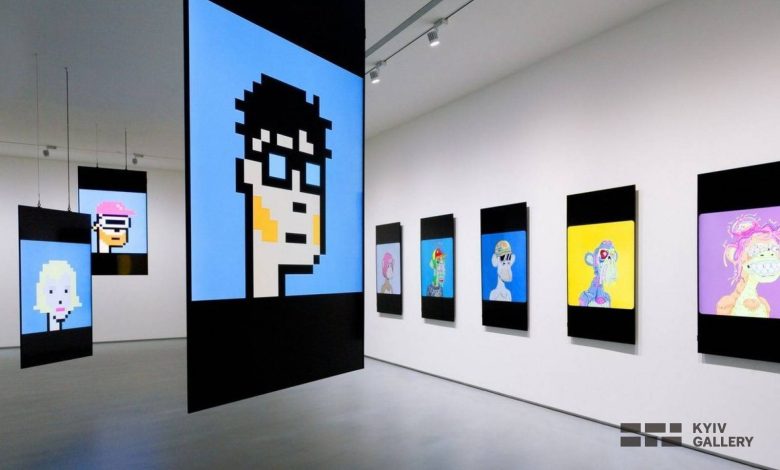NFTs and Digital Art Exhibitions

- Exploring the intersection of NFTs and traditional art exhibitions
- The rise of NFTs: A game-changer for the art world
- How digital art exhibitions are embracing NFT technology
- Demystifying the world of NFTs in the context of art exhibitions
- Challenges and opportunities of showcasing NFT art in physical galleries
- The future of art curation: NFTs and virtual exhibitions
Exploring the intersection of NFTs and traditional art exhibitions
Exploring the intersection of NFTs and traditional art exhibitions opens up a world of possibilities for artists and art enthusiasts alike. By incorporating digital art into physical gallery spaces, curators can create immersive experiences that bridge the gap between the virtual and physical worlds. This innovative approach allows for a deeper exploration of the digital art landscape while also providing a platform for NFT artists to showcase their work in a traditional setting.
One of the key benefits of merging NFTs with traditional art exhibitions is the ability to reach a wider audience. While digital art galleries are accessible to anyone with an internet connection, physical exhibitions attract visitors who may not have otherwise engaged with NFT art. This cross-pollination of audiences can lead to increased visibility and recognition for digital artists, helping to legitimize the medium in the eyes of the traditional art world.
Furthermore, the integration of NFTs into traditional art exhibitions can create new opportunities for collaboration and experimentation. Artists can explore innovative ways to combine digital art with physical installations, blurring the lines between the two mediums. This fusion of digital and traditional art can spark conversations about the nature of art in the digital age and push the boundaries of what is considered “art.”
The rise of NFTs: A game-changer for the art world
NFTs have been making waves in the art world, revolutionizing the way digital art is bought, sold, and collected. These non-fungible tokens have opened up a whole new realm of possibilities for artists, allowing them to create unique digital artworks that can be tokenized and sold as one-of-a-kind assets.
One of the key advantages of NFTs is their ability to provide proof of ownership and authenticity, thanks to blockchain technology. This has brought a level of trust and transparency to the art market that was previously lacking, making it easier for artists to monetize their work and for collectors to invest in digital art with confidence.
With the rise of NFTs, we have seen a surge in digital art exhibitions that showcase these tokenized artworks. These exhibitions are not only a celebration of creativity and innovation but also a reflection of the changing landscape of the art world. They provide a platform for artists to reach a global audience and for collectors to discover and acquire unique pieces of digital art.
As NFTs continue to gain popularity, we can expect to see even more groundbreaking collaborations between artists, collectors, and platforms that are embracing this new technology. The future of digital art exhibitions is bright, thanks to the game-changing potential of NFTs.
How digital art exhibitions are embracing NFT technology
Digital art exhibitions are increasingly embracing NFT technology to showcase and sell digital artworks. NFTs, or non-fungible tokens, have revolutionized the art world by providing a way to authenticate and verify the ownership of digital art using blockchain technology. This has opened up new possibilities for artists to monetize their work and for collectors to invest in digital art in a secure and transparent way.
One of the key ways in which digital art exhibitions are incorporating NFT technology is by hosting virtual exhibitions where NFTs are used to represent digital artworks. These exhibitions allow artists to mint their digital creations as NFTs, which can then be bought, sold, and traded on various NFT marketplaces. This not only provides artists with a new revenue stream but also allows them to reach a global audience of collectors who are interested in owning unique digital artworks.
Another way in which digital art exhibitions are leveraging NFT technology is by collaborating with NFT platforms to host exclusive NFT drops and auctions. These events generate buzz and excitement around digital art, attracting both seasoned collectors and newcomers to the NFT space. By partnering with NFT platforms, digital art exhibitions can tap into a growing community of NFT enthusiasts who are eager to discover and support emerging digital artists.
Overall, the integration of NFT technology into digital art exhibitions is transforming the way we experience and interact with art in the digital age. By embracing NFTs, artists and collectors alike are able to participate in a decentralized art market that values creativity, authenticity, and innovation. As NFT technology continues to evolve, we can expect to see even more innovative ways in which digital art exhibitions incorporate NFTs to showcase and promote digital art to a global audience.
Demystifying the world of NFTs in the context of art exhibitions
Exploring the realm of NFTs within the context of art exhibitions can be a fascinating journey into the intersection of traditional and digital art forms. NFTs, or non-fungible tokens, have revolutionized the way we perceive and interact with art in the digital age. By leveraging blockchain technology, artists can create unique digital assets that are verifiable, scarce, and indivisible.
When it comes to art exhibitions, NFTs offer a new avenue for artists to showcase their work to a global audience. By minting their artwork as NFTs, artists can reach collectors and art enthusiasts from around the world without the limitations of physical galleries. This opens up a world of possibilities for artists to explore new mediums, styles, and concepts in their work.
One of the key benefits of NFTs in the context of art exhibitions is the ability to provide provenance and authenticity for digital artworks. Through the use of smart contracts on the blockchain, artists can ensure that their work is original and that collectors are receiving genuine pieces. This level of transparency and security is crucial in the digital art world, where issues of copyright infringement and plagiarism are prevalent.
Challenges and opportunities of showcasing NFT art in physical galleries
Displaying NFT art in physical galleries presents both challenges and opportunities for the art world. On one hand, showcasing digital art in a traditional gallery setting can be a novel and exciting experience for viewers, bridging the gap between the digital and physical realms. It allows for a deeper appreciation of the artwork and can attract a new audience to the gallery space.
However, there are also challenges that come with exhibiting NFT art in physical galleries. One of the main obstacles is the issue of authenticity and provenance. Unlike traditional art, NFTs rely on blockchain technology to verify ownership and originality. This can be difficult to convey in a physical setting, where viewers may question the legitimacy of the artwork.
Another challenge is the logistics of displaying digital art in a physical space. Unlike traditional artworks, NFTs do not have a physical form, which can make it challenging to present them in a gallery setting. Curators and gallery owners must find creative ways to showcase digital art, such as using screens or projectors.
Despite these challenges, there are also opportunities for galleries to embrace NFT art. By incorporating digital artworks into their exhibitions, galleries can attract a younger, tech-savvy audience who are interested in exploring the intersection of art and technology. This can help galleries stay relevant and innovative in a rapidly changing art landscape.
The future of art curation: NFTs and virtual exhibitions
The future of art curation is rapidly evolving with the rise of NFTs and virtual exhibitions. These innovative technologies are revolutionizing the way art is bought, sold, and displayed. NFTs, or non-fungible tokens, have opened up new possibilities for artists to showcase and monetize their digital creations. Virtual exhibitions provide a unique platform for art enthusiasts to explore and experience artwork from the comfort of their own homes.
By leveraging NFTs, artists can create limited edition digital artworks that are authenticated and secured on the blockchain. This not only adds value to the artwork but also ensures its provenance and ownership. Virtual exhibitions, on the other hand, allow for a more immersive and interactive art-viewing experience. Visitors can navigate through virtual galleries, attend virtual events, and even purchase NFT artworks directly from the exhibition.
As the art world continues to embrace digital innovation, the possibilities for NFTs and virtual exhibitions are endless. These technologies have the potential to democratize art curation, making it more accessible and inclusive for a global audience. Whether you are an artist looking to showcase your work or an art enthusiast eager to explore new digital realms, NFTs and virtual exhibitions are shaping the future of art in exciting and unprecedented ways.



